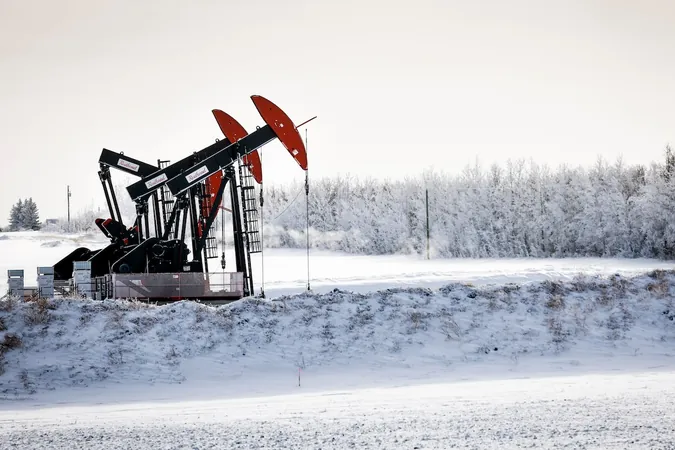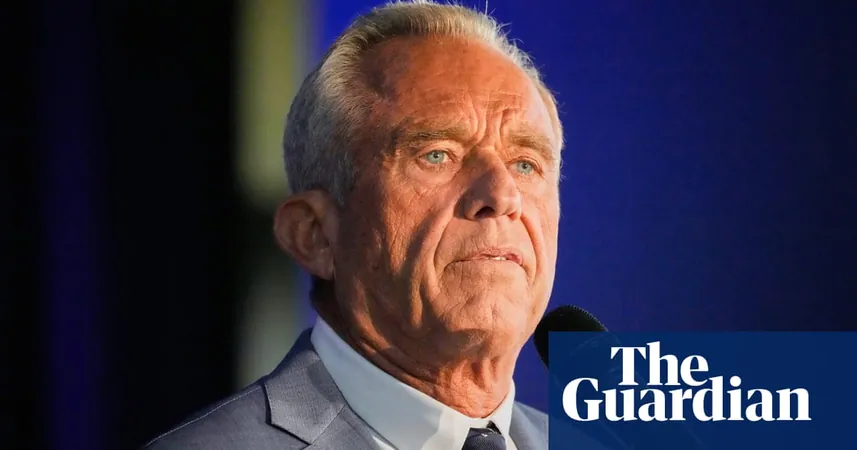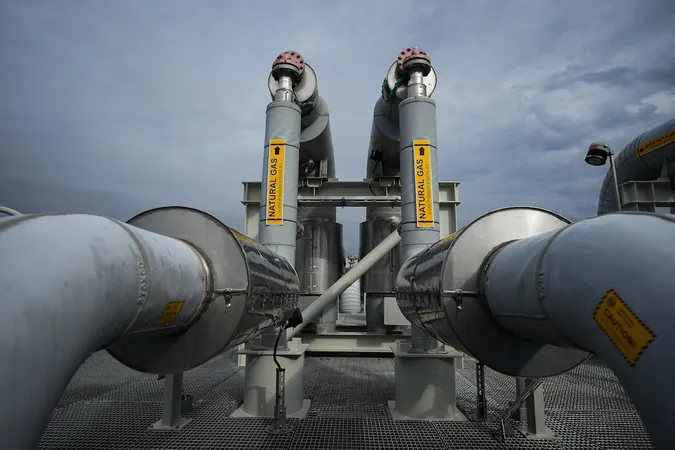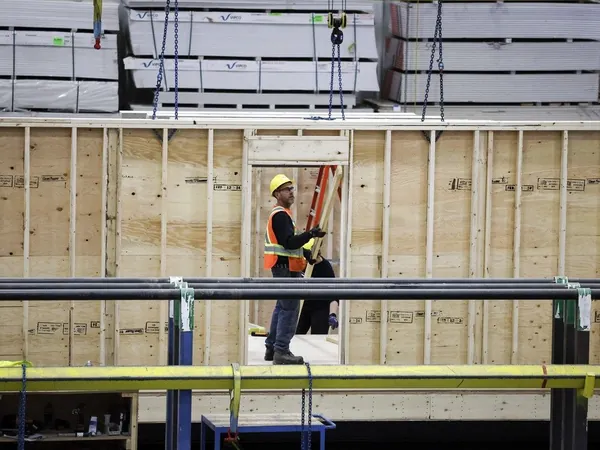
Reviving Canada: Unleashing the True Potential of the Nation's Economy
2025-04-05
Author: Michael
Canada stands on the brink of economic awakening, realizing the vast potential it possesses. The erosion of its traditional dependency on the United States—highlighted by the tumultuous trade policies of former President Donald Trump—has sparked a national conversation about strengthening its own economic foundations.
With a treasure trove of natural resources, a robust agricultural sector, a skilled workforce, and the strategic advantage of coastal access to key markets, Canada is more than capable of elevating its position on the global economic stage. Politicians, business leaders, and everyday citizens alike are recognizing the inherent advantages that can transform Canada into a leading economic powerhouse.
As national elections approach, political leaders are pledging to capitalize on these strengths. However, their promises often lack the substance and tangible plans necessary for real change. The true test will lie in the hands of the next government, which must collaborate closely with provinces, territories, and the private sector to harness this wave of patriotic enthusiasm before it wanes.
But the approach must be more nuanced than merely throwing money at every sector or hastily dismantling regulations. It requires strategic planning and actionable policies that can be quickly executed, setting clear growth goals rather than producing lengthy, ineffective plans meant to satisfy every stakeholder.
Recent insights from industry experts have revealed ten critical areas where Canada can adapt its strategies. While there are numerous fronts on which the government can engage, effectiveness depends on prioritizing specific investments strategically.
For instance, while fossil fuel projects may seem attractive, the long-term decline in demand necessitates a careful selection of which initiatives to fast-track. Instead of reviving controversial projects like the abandoned Energy East pipeline—which lacks current proposals and faces an uncertain market—efforts might be better aimed at expanding natural gas exports through Pacific ports.
Similarly, taking advantage of opportunities in critical minerals is vital, but it's essential not to become overly consumed by challenging projects like Ontario's Ring of Fire. Instead, the government should prioritize those that offer quicker results and less logistical hassle.
Moreover, regulatory processes have often hindered the deployment of Canada’s abundant resources. While the country does not need to scrap all regulations, invoking cooperation agreements between federal and provincial governments for environmental assessments can significantly streamline processes and save time.
Indigenous communities represent an untapped reservoir of potential for economic collaboration. Initiatives that foster equitable partnerships will ensure that projects are developed with community support, avoiding delays and legal challenges. Establishing a federal fund to assist these communities in capacity building can create a more balanced approach to development.
As Canada contemplates its defense expenditures—a lucrative area of investment—there's room to pivot from automotive manufacturing to producing military infrastructure. Simultaneously, the nation could bolster its capability to supply mining equipment and nuclear reactor components.
The ongoing food trade dynamic with the United States presents both challenges and opportunities. The government can mobilize incentives to promote food processing industries, creating domestic manufacturing facilities for Canadian agricultural products. Experts suggest knocking down interprovincial barriers to food trade and enhancing rural digital infrastructure as steps toward long-term agricultural competitiveness.
The imperative to diversify Canada's trade relationships has never been more pressing. As the nation leans into its free-trade agreements, particularly with the European Union and emerging Asian markets, building these international relationships is crucial for broader economic resilience.
Logistical challenges persist across sectors, primarily through inefficient port operations and rail bottlenecks. By identifying urgent projects to enhance trade capacity and investing in public-private partnerships, Canada can better position itself in the global supply chain.
For the next government, embracing Canada’s clean energy potential is paramount. With a significant supply of clean electricity, investments in renewable energy—particularly in emerging sectors like battery production and geothermal energy—can attract significant international interest. The shift towards clean technology, coupled with smart regulations and incentives, can steer investments away from the United States and into Canadian markets.
The resurgence of interest in nuclear energy, including the development of advanced reactors and potentially uranium enrichment, symbolizes Canada’s strategic move toward energy independence and security. As the world grapples with supply chain dependencies, Canada must seize this moment to expand its role in the clean energy revolution.
Finally, revitalizing Canada’s immigration policy is crucial to not only maintaining but enhancing the skilled workforce that drives innovation. Ensuring that Canada remains an attractive destination for the brightest minds worldwide will bolster both economic growth and social stability.
As the country navigates these pivotal changes, it's clear: Canada has the tools to reshape its economy, but the execution will be key. The potential for greatness lies in leveraging its resources wisely, cultivating talent, and forging a future that embraces innovation and inclusivity. The promise of a thriving Canadian economy is alive and waiting to be unlocked. Will the next government rise to the challenge?









 Brasil (PT)
Brasil (PT)
 Canada (EN)
Canada (EN)
 Chile (ES)
Chile (ES)
 Česko (CS)
Česko (CS)
 대한민국 (KO)
대한민국 (KO)
 España (ES)
España (ES)
 France (FR)
France (FR)
 Hong Kong (EN)
Hong Kong (EN)
 Italia (IT)
Italia (IT)
 日本 (JA)
日本 (JA)
 Magyarország (HU)
Magyarország (HU)
 Norge (NO)
Norge (NO)
 Polska (PL)
Polska (PL)
 Schweiz (DE)
Schweiz (DE)
 Singapore (EN)
Singapore (EN)
 Sverige (SV)
Sverige (SV)
 Suomi (FI)
Suomi (FI)
 Türkiye (TR)
Türkiye (TR)
 الإمارات العربية المتحدة (AR)
الإمارات العربية المتحدة (AR)